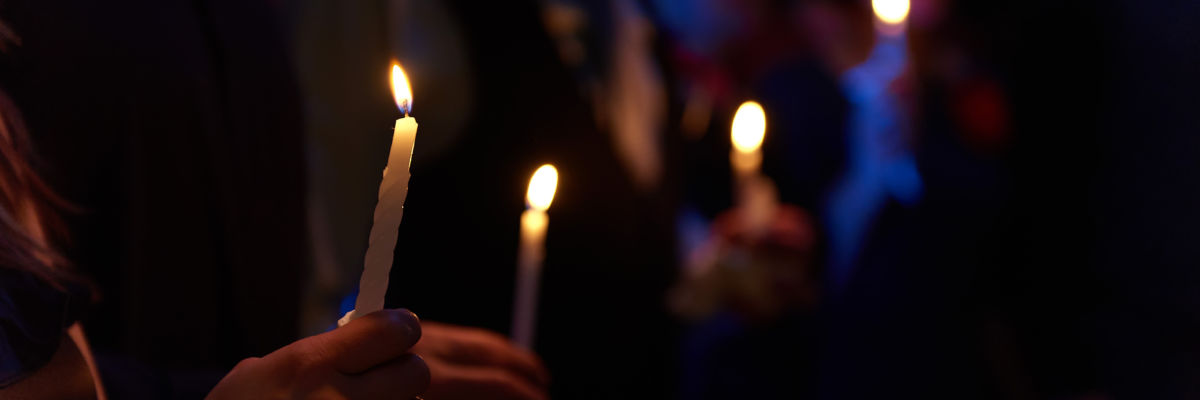
The liturgy wars are hot again.
Pope Benedict’s fragile peace, which left Catholics who attend the Mass of Paul VI (commonly called the Novus Ordo) to coexist with those who go for the traditional Latin Mass of 1962, fell apart after Pope Francis published Traditionis Custodes last year. And Holy Week is a time of special consternation for Catholics in the West who are interested in liturgical unity. If you thought two disparate liturgical camps was bad enough, guess what: this week, we have three. Thanks to a sort of “proto-Vatican-II” set of reforms in the 1950s, the Masses of 1962 and 1954 differ radically at this time of year (and a few others)—and so a sub-camp of trads go to great lengths to find the vanishingly rare pre-’55 Holy Week.
It’s not a pretty picture: one church, purportedly with one liturgy but with three camps, each seeking its own Mass. You can criticize Pope Francis’s enforcement of unity, but he’s right to be concerned about it.
There is a poignant kind of suffering to be found in liturgical disunity. It comes in bold colors for traditional Catholics, who see their churches’ weekly bulletins centered on a calendar they don’t follow and can’t discuss the readings of the Mass with their Pauline brethren. But the latter may sometimes feel it, too, albeit in paler shades—for example, when two pastors in two different churches choose two different options for a Mass reading. Imagine the water cooler conversation at work Monday morning: “Can you believe all that in Ephesians about wives being subject to their husbands?” “Wait, what?”
Those of us in the Roman Rite family should all hear the same word of God on Sunday and digest it together. But it’s not like that. (Yesterday, for example, was a total mess.) And yet today, for all of us, the Gospel reading is almost exactly the same: John 12:1-9, with two additional verses in the Novus Ordo. So for all intents and purposes, today, all Catholics of the West can hear, meditate on, and offer to God in liturgical prayer the same Gospel.
During the first Holy Week, too, there was a spark of unity in suffering. When Jesus was arrested in Gethsemane, although the disciples fled all in different directions, they were still united in persecution. They’d established themselves as Christians, and the hostile ruling party was now determined to make things tough for them. Even if, thus scattered, they were to “hang separately,” they’d still be hanging together categorically, as Christ’s followers.
Likewise for us: we may obsess over our liturgical divisions, but the world doesn’t. A good Catholic, believing that bread and wine literally become the body and blood of the God-Man, whose human body perished 2,000 years ago only to rise again over the weekend, will not dodge the obsessively scientistic modern world’s scorn of that belief by virtue of his superior liturgical taste. Nor will the beauty of even the most beautiful Mass persuade the world that divorce, or contraception, or sodomy is evil, or that the weak need protection and not exploitation, or that modern pagans need to accept the saving truth of Christ. In fact, the drivers of secular culture hate beauty. Just look at modern architecture.
Whether we’re at the foot of the cross or cowering in the Upper Room, if we have professed Christ, then suffering is our lot. And we’re united in that suffering with our brother in the church across town, with its folded chasubles, even if the two of us have barely anything else in common.
What do we have to look forward to tomorrow? Well, the whole thing’s going to be thrown into chaos again, diverging more and more, until the Easter vigil, where three “forms,” or “rites,” or whatever of the Roman Mass branch off so bracingly that you’ll struggle to find common ground among them. The shepherd will be struck, the sheep scattered to their various Gospel readings, prayers, ceremonies.
The pre-Pentecost seedling Church was scattered on Good Friday, too. In remembering that, we can also remember this shred of unity from today, Monday in Holy Week, and unite with our fellow Catholics in suffering—in the shared suffering of division, a curse that’s afflicted us since the Tower of Babel.
A new truce in the liturgy wars doesn’t seem to be imminent. But let’s not let liturgical divisions throw us off from the primary mission to get closer to Christ. However far we may have run from him since he was arrested, we’re joined together as brothers in our resolve to return to him. The road there is only going to get harder—more and more like the via crucis, as Christ foretold—as the forces of evil consolidate their power. So let us suffer together, and stick together where it matters most.



